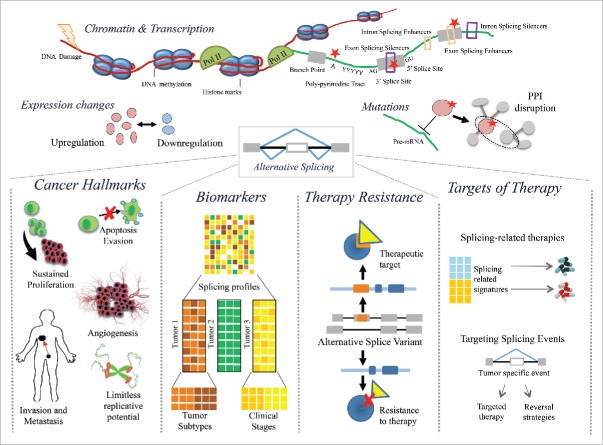Figure 1.
Alterations that lead to alternative splicing changes in cancer and their implication for the development of the disease and possible therapeutic strategies. Alterations include expression changes in splicing factors, mutations in splicing factors and splicing regulatory sequences, alterations in the transcription and chromatin state, and DNA damage. These alterations can lead to alternative splicing changes in tumors, which may recapitulate cancer hallmarks, like cell proliferation, disruption of apoptosis, cell motility and invasion, angiogenesis, and limitless replicative potential. Splicing patterns provide predictive signatures for tumor subtypes and clinical properties, and may be indicative of therapy resistance. Finally, some splicing changes are emerging as direct targets of therapy, and the splicing properties of a tumor, as well as the mutational status of splicing factors, can be informative for selection of specific therapies.

